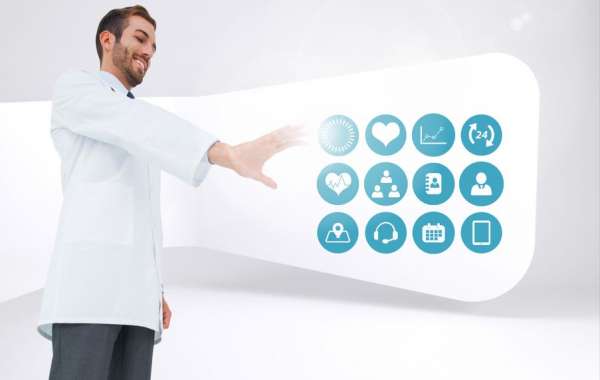In today's rapidly evolving world, technology continues to revolutionize every aspect of our lives, and healthcare is no exception. The fusion of healthcare and technology has paved the way for groundbreaking innovations, transforming the delivery of care and improving patient outcomes. As we delve into the intricate landscape of healthcare technology, let's unravel its key components and explore the latest trends shaping the future of healthcare IT.
1. Electronic Health Records (EHR):
Electronic Health Records, commonly known as EHR, are the digital counterparts of traditional paper-based medical records. These comprehensive electronic records contain a patient's medical history, diagnoses, medications, treatment plans, immunization dates, allergies, radiology images, and laboratory test results, among other essential clinical data. The transition from paper records to EHR has streamlined workflows, enhanced data accuracy, and facilitated seamless information exchange among healthcare providers. With the rise of interoperability standards, EHR systems are becoming increasingly interconnected, enabling real-time access to patient information across different healthcare settings.
2. Telemedicine and Remote Monitoring:
The advent of telemedicine has revolutionized the delivery of healthcare services, especially in remote or underserved areas. Telemedicine leverages telecommunications technology to facilitate remote consultations, diagnosis, and treatment without the need for in-person visits. From video conferencing to mobile health applications, telemedicine platforms offer a wide array of tools to connect patients with healthcare providers anytime, anywhere. Furthermore, remote monitoring devices, such as wearables and IoT-enabled sensors, enable continuous tracking of vital signs and health metrics, empowering patients to actively participate in their care management while providing clinicians with valuable insights for timely interventions.
3. Artificial Intelligence (AI) and Machine Learning:
Artificial Intelligence and Machine Learning are driving transformative advancements in healthcare by harnessing the power of data analytics and predictive modeling. AI algorithms analyze vast amounts of medical data to identify patterns, predict disease progression, and optimize treatment protocols. From image recognition in radiology to natural language processing in clinical documentation, AI-powered solutions are augmenting healthcare decision-making processes, improving diagnostic accuracy, and enhancing operational efficiency. Moreover, AI-driven predictive analytics enable proactive risk stratification and personalized interventions, ultimately leading to better patient outcomes and cost-effective care delivery.
4. Health Information Exchange (HIE):
Health Information Exchange facilitates the secure sharing of electronic health information among healthcare providers, payers, public health agencies, and patients. By establishing interoperable networks and data standards, HIE promotes seamless data exchange across disparate systems, enabling care coordination, care transitions, and population health management initiatives. Interconnected HIE systems facilitate comprehensive care coordination by ensuring that clinicians have access to up-to-date patient information, thereby reducing medical errors, duplicative tests, and unnecessary healthcare utilization.
5. Cybersecurity and Data Privacy:
As healthcare organizations increasingly rely on digital technologies to store and transmit sensitive patient information, cybersecurity and data privacy have emerged as paramount concerns. Healthcare data breaches can have far-reaching consequences, jeopardizing patient confidentiality, damaging organizational reputation, and exposing healthcare providers to legal and financial liabilities. Robust cybersecurity measures, including encryption, access controls, network segmentation, and regular security audits, are imperative to safeguarding health IT infrastructure and protecting against evolving cyber threats.
Conclusion
The convergence of healthcare and technology is reshaping the landscape of modern healthcare delivery, with profound implications for patients, providers, and stakeholders alike. By embracing the key components of healthcare technology, such as EHR, telemedicine, AI, HIE, and cybersecurity, healthcare organizations can harness the power of infotech to drive innovation, improve patient outcomes, and advance the quality and efficiency of care delivery. As healthcare technology trends continue to evolve, staying abreast of the latest developments and best practices is essential for navigating the dynamic healthcare IT landscape effectively.
This blog post was crafted with insights from leading tech publications and industry experts to provide a comprehensive overview of the key components of healthcare technology and the emerging trends shaping its future.




